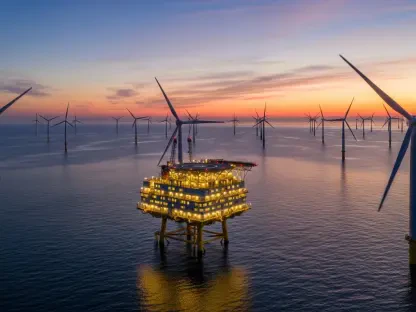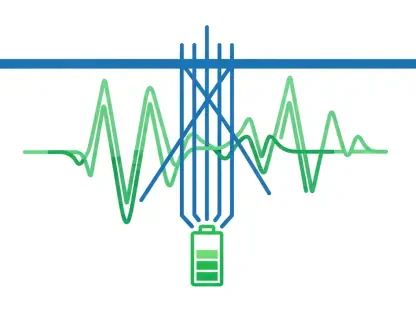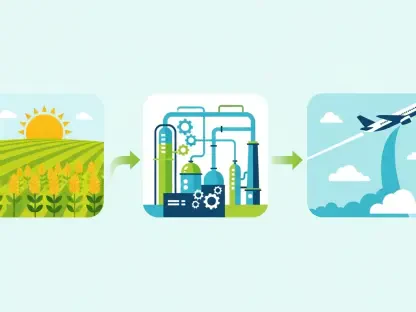In an era where the digital landscape is expanding at an unprecedented pace, the energy demands of tech giants are skyrocketing, driven by the intensive requirements of artificial intelligence and sprawling data center networks. Google, one of the foremost players in this arena, has taken a groundbreaking step by announcing a collaboration to build a small modular nuclear reactor (SMR) in Tennessee. This initiative, aimed at powering data centers in the southeastern United States, could redefine how sustainable energy supports technological innovation. Partnering with Kairos Power and the Tennessee Valley Authority (TVA), the project not only addresses the immense power needs of modern computing but also positions nuclear energy as a potential cornerstone for a carbon-free future. As the tech industry grapples with balancing growth and environmental responsibility, this development raises a pivotal question: can compact, advanced nuclear solutions truly meet the colossal energy appetites of digital infrastructure while maintaining safety and scalability?
A Landmark Project in Tennessee
The announcement of Google’s SMR project in Oak Ridge, Tennessee, marks a significant milestone in the intersection of technology and sustainable energy. Set to begin supplying electricity by 2030, this reactor is designed to deliver 50 gigawatts of capacity, translating to 500 megawatts of advanced nuclear power—enough to energize around 350,000 homes. Through a long-term power purchase agreement with TVA, this energy will directly support Google’s data centers in Tennessee and Alabama. What sets this project apart is its pioneering status as the first U.S. utility power purchase agreement for generation IV nuclear technology, often heralded as the safest and most sustainable form of nuclear power under development. This collaboration showcases a strategic move by Google to secure reliable, clean energy for its operations, reflecting a broader commitment to reducing carbon footprints in an industry notorious for high energy consumption. The choice of Oak Ridge, a historic hub for nuclear research, further underscores the symbolic and practical importance of this endeavor.
Beyond the technical specifications, this Tennessee initiative highlights a growing synergy between tech companies and energy providers to tackle the escalating demands of the digital age. The involvement of the U.S. Department of Energy, through its Advanced Reactor Demonstration Program, emphasizes the national significance of deploying such cutting-edge technology. By supporting Kairos Power in navigating technical and regulatory challenges, the department aims to ensure that projects like this pave the way for broader adoption of SMRs. For Google, this is more than just an energy solution; it’s a statement of intent to lead in sustainable practices while meeting the power needs of AI-driven processes. The partnership with local stakeholders, including the Oak Ridge community, also illustrates a collective effort to integrate economic growth with environmental stewardship, setting a potential blueprint for how tech giants can align with regional energy goals to create mutually beneficial outcomes.
The Broader Implications for Tech and Energy
The surge in energy consumption by data centers, particularly those fueling generative AI, has pushed the tech industry to explore innovative power sources, with nuclear energy emerging as a frontrunner. SMRs, like the one planned in Tennessee, offer distinct advantages over traditional nuclear plants, including scalability, enhanced safety features, and a reduced carbon footprint. Google’s decision to invest in this technology reflects a wider trend among tech companies to secure sustainable energy solutions that can keep pace with rapid digital expansion. Moreover, the project underscores the potential of advanced nuclear reactors to not only power private enterprises but also strengthen public electricity grids. As emphasized by U.S. Energy Secretary Chris Wright, such initiatives are vital for maintaining leadership in both AI and energy innovation, positioning the United States at the forefront of what could be a transformative shift in how power is generated and consumed.
Looking at the bigger picture, this collaboration between Google, Kairos Power, and TVA signals a consensus on the urgent need for sustainable energy to underpin technological progress. While no advanced nuclear power plants are currently operational in the U.S., this project represents a critical step toward what has been described as the next American nuclear renaissance. The implications extend beyond a single company or region, suggesting a future where SMRs could become a standard for powering everything from data centers to entire communities. This initiative also sets a precedent for how public-private partnerships can accelerate the adoption of next-generation technologies, balancing the demands of a growing digital economy with the imperative of environmental responsibility. As the energy landscape evolves, the success of such projects could inspire similar efforts globally, reshaping the way society approaches the dual challenges of innovation and sustainability.
Reflecting on a Sustainable Path Forward
Reflecting on this historic endeavor, it’s evident that Google’s partnership in Tennessee lays a crucial foundation for integrating advanced nuclear technology into mainstream energy solutions. The commitment to harnessing generation IV nuclear power through SMRs demonstrates a forward-thinking approach to meeting the voracious energy needs of data centers while prioritizing carbon-free alternatives. Moving forward, the focus should shift to scaling these innovations, ensuring that regulatory frameworks and public support keep pace with technological advancements. Stakeholders across industries must collaborate to address potential hurdles, from safety concerns to cost efficiencies, while exploring how such reactors can support broader energy grids. As this project unfolds, it becomes a beacon of possibility, urging tech giants and policymakers alike to invest in sustainable power sources that could redefine the digital future, ensuring that growth and environmental care go hand in hand.









